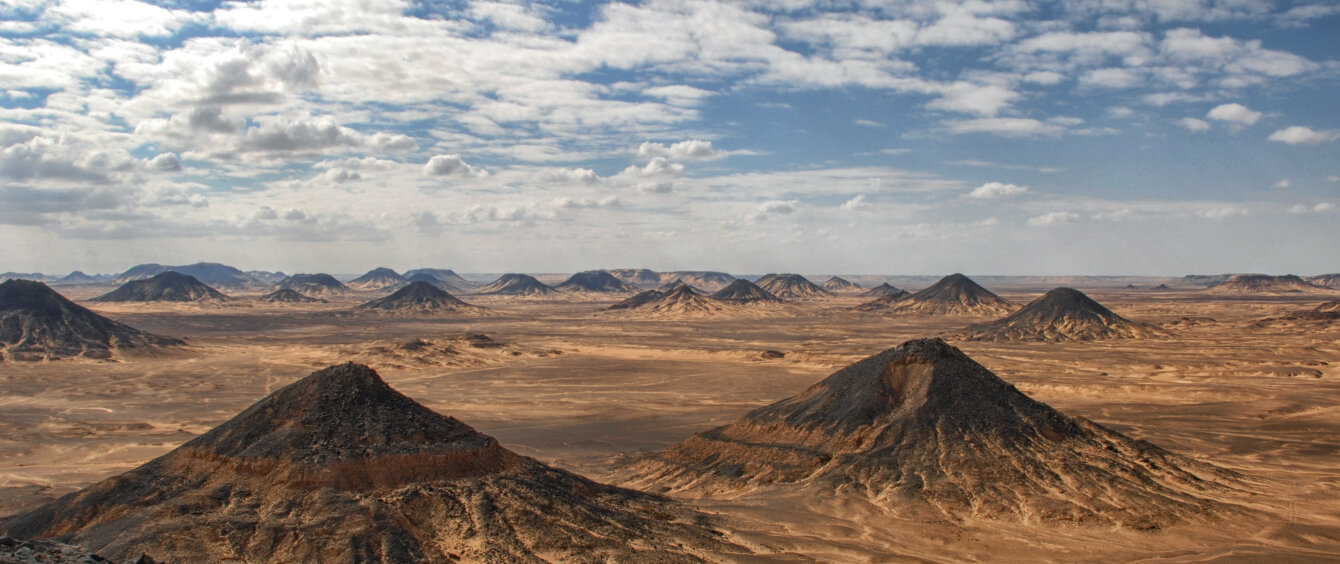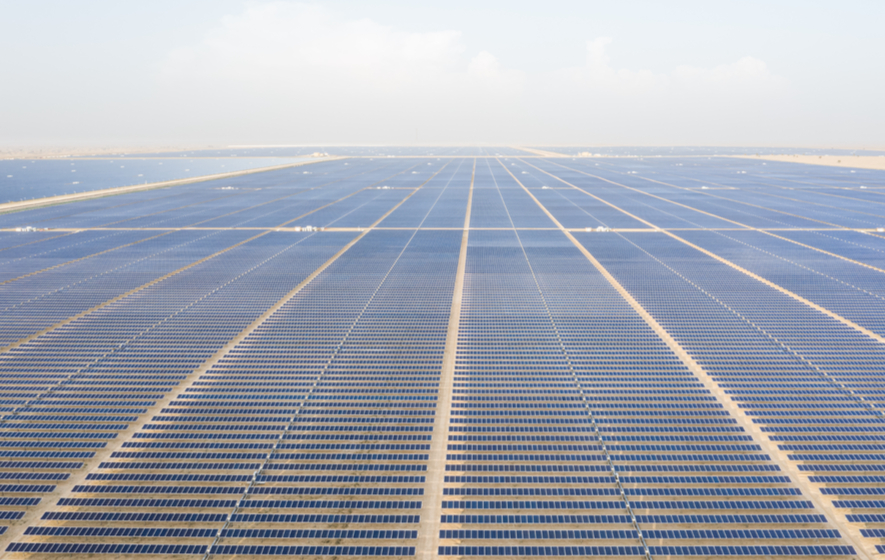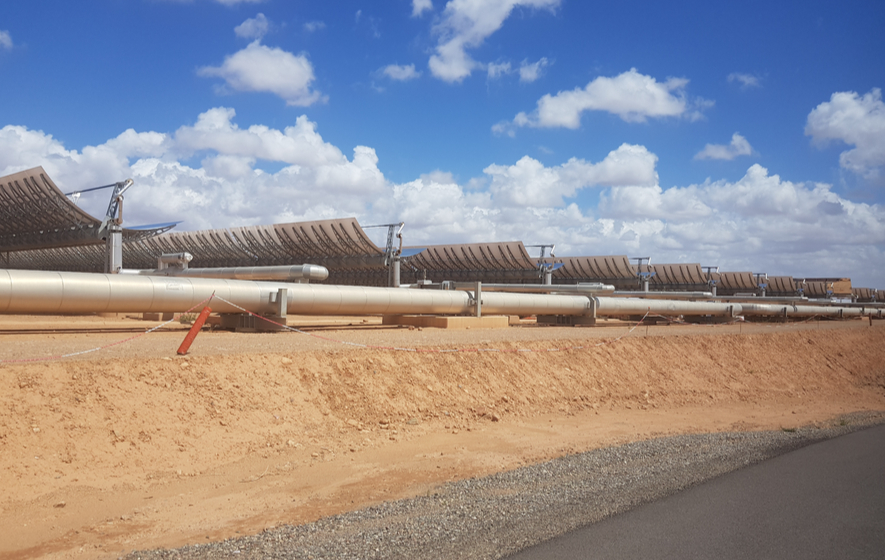North Africa’s potential to produce hydrogen is more than theoretical. Algeria, Egypt and Libya are all major gas producers and the region’s renewable energy resources are massive.
Fossil fuel export revenues are critical for the financial stability of the oil and gas producers, but, as the energy transition progresses, demand for fossil fuels is expected to peak and eventually fall.
Europe, today dependent on fossil fuel imports, will almost certainly need clean energy imports in the future as it moves toward net zero by 2050.
There is thus a clear common interest in harnessing North Africa’s renewable energy potential to underpin the region’s own energy transition – to create employment and promote economic and social stability – and to meet Europe’s need for clean energy supplies.
Green resource
While existing gas production could be used for blue hydrogen production, North Africa’s renewable energy potential is arguably off the scale and far greater than its fossil fuel resources or its domestic energy demand.
It has huge land areas that are sparsely populated and exceptional levels of solar irradiation. Algeria, for example, is the tenth largest country in the world by land mass and benefits from on average 3,000 hours of sunshine a year.
The International Energy Agency and studies such as investment bank Lazard’s Levelized Cost of Energy analysis have established utility-scale solar photovoltaics as the cheapest form of electricity generation, closely followed by onshore wind.
Record low bids for solar PV have been seen in Portugal, to North Africa’s north, and at similar latitudes in the Middle East, for example in the UAE. There is thus little reason to doubt that North Africa could generate solar power on a huge scale and at world beating low prices.
The region’s wind resource is also large, with trade winds providing high and often very steady wind speeds. Morocco, for example, is estimated to have offshore wind potential of 200 GW, benefiting from average wind speeds of 7.5-9.5 m/s in the south and 9.5-11.0 m/s in the north.
Algeria again surpasses all with the International Finance Corporation, part of the World Bank, estimating the country’s technical wind resource at 7,700 GW. To put this in perspective, total wind capacity in Europe at the end of 2020 stood at just over 216 GW.
However, North Africa does not have surpluses of potable water, needed for hydrogen production, nor developed electricity infrastructure that would allow the easy connection of distributed generation assets. According to UNICEF, the Middle East and North Africa (MENA) region is the most water stressed in the world.
Although there are various ways of managing limited water supplies, desalination plants are a key option, but these depend on heavy electricity use to run and are one factor behind the MENA region’s high rates of energy consumption growth. Both enhanced water supplies and grid infrastructure investment thus represent additional base costs underlying the development of hydrogen as an energy export in the region.
Hydrogen markets
Moreover, while low-cost electricity generation is a fundamental base for green hydrogen production, the losses involved in conversion and capital cost of electrolysers mean that green hydrogen today is uncompetitive. According to a recent study by German thinktank Agora Energiewende, even if EU carbon prices rose to €100-200/mt, they would still be insufficient to incentivise green hydrogen production.
Costs are expected to fall as hydrogen is produced at greater scale, but at least initially, investment in the sector, whether in Europe or North Africa, will likely require guarantees to underpin costs and ensure there are willing buyers able to use the product. Agora’s study argues that targeted policy instruments are required in Europe for industry, power, shipping and aviation to create markets for hydrogen use.
Transport
Lazard says hydrogen production that requires the least additional steps in terms of conversion, storage, transportation will become competitive first.
Agora, similarly, argues that hydrogen trade will be regional rather than international because of high transport costs. It says hydrogen shipping costs, for example from Iberia to Northwest Europe, are roughly twice that of using pipelines or power cables for transmitting renewable electricity to produce hydrogen domestically in Northwest Europe.
In this respect, North Africa’s proximity to Europe is a benefit. Gas pipelines from Algeria to Spain and Italy and from Libya to Italy already exist. Repurposed pipelines are identified by Agora as the cheapest means of hydrogen transport.
Nonetheless, imported hydrogen will still need low production costs to offset transport costs in order to compete with domestically-produced hydrogen.
Investment climate
North Africa states have struggled to meet their own renewable energy targets, often as a result of unattractive investment conditions, insufficiently developed legal frameworks for renewable energy development and uneven and inconsistent implementation of regulations. These factors have deterred the foreign investment on which hydrogen production will almost certainly depend.
There are signs of change. Egypt, for example, is supporting public-private investment and improved private sector access to electricity generation. In September 2020, the government successfully issued its first green bonds. However, many market liberalisation policies have not been implemented.
Algeria has removed a requirement for majority Algerian ownership of renewable energy projects and repealed restrictions on foreign financing, both of which were significant barriers to inward foreign investment.
Morocco, which already has electricity interconnections with Spain, has done much to provide a secure legal and financial framework. The country was ranked 16th in Ernst and Young’s Renewable Energy Country Attractiveness Index in October, the highest-ranked North African country. Egypt came in 19th, up one, but no other North African state made the top 40.
Investment uncertainties
North Africa’s huge renewable energy resource and proximity to Europe lie behind a number of agreements announced in 2021 by European energy companies to assess the prospects for green and blue hydrogen production in the region.
These projects will necessarily be large to reap the economies of scale required to reduce costs. Moreover, investors will need to be certain both that stable and supportive investment environments exist in the target country and that Europe will put in place the policies and instruments necessary to create hydrogen demand.
Political stability is a major factor governing large investment decisions and North Africa’s recent history has been tumultuous since the Arab Spring in the early 2010s. Although levels of political stability differ across the region, Libya, which has now suffered years of conflict and still has no effective centralized government, is a case in point.
Moreover, the prospect of future reductions in oil and gas revenues in future could in itself prove a destabilizing factor for North African states heavily dependent on fossil fuel exports. Renewable energy investments targeting hydrogen or electricity exports would be a positive offsetting force, by creating domestic employment and generating government revenue, but before committing funds, investors will need to sure that North Africa states will be stable partners.


